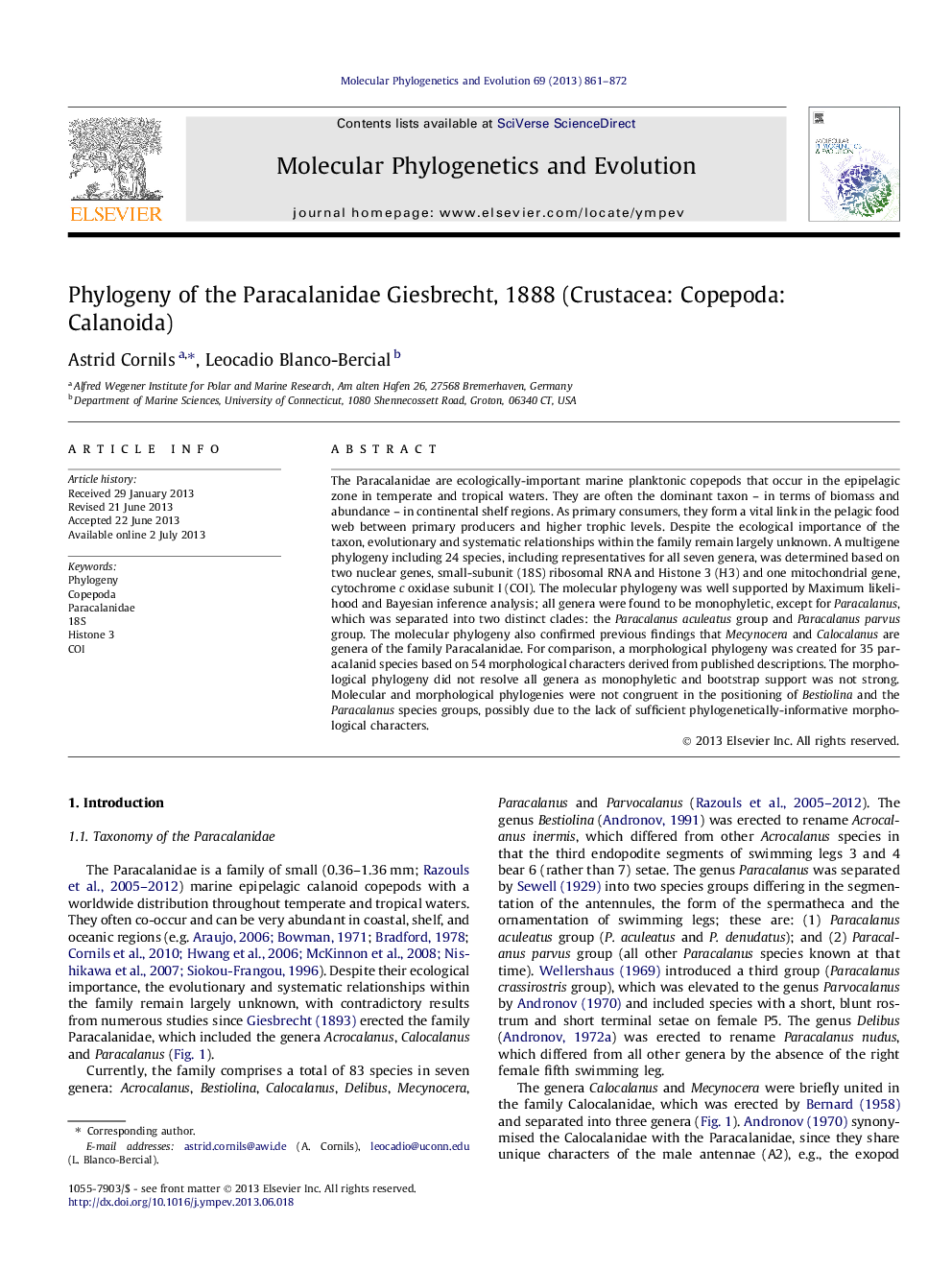| کد مقاله | کد نشریه | سال انتشار | مقاله انگلیسی | نسخه تمام متن |
|---|---|---|---|---|
| 5919693 | 1164270 | 2013 | 12 صفحه PDF | دانلود رایگان |

- The genus Mecynocera belongs to the family Paracalanidae.
- All genera of Paracalanidae are monophyletic, except Paracalanus.
- The genus Paracalanus is polyphyletic, thus confirming species groups.
- Morphological and molecular phylogenies differ in the position of Bestiolina and the Paracalanus species groups.
- The morphological character set does not resolve the phylogeny.
The Paracalanidae are ecologically-important marine planktonic copepods that occur in the epipelagic zone in temperate and tropical waters. They are often the dominant taxon - in terms of biomass and abundance - in continental shelf regions. As primary consumers, they form a vital link in the pelagic food web between primary producers and higher trophic levels. Despite the ecological importance of the taxon, evolutionary and systematic relationships within the family remain largely unknown. A multigene phylogeny including 24 species, including representatives for all seven genera, was determined based on two nuclear genes, small-subunit (18S) ribosomal RNA and Histone 3 (H3) and one mitochondrial gene, cytochrome c oxidase subunit I (COI). The molecular phylogeny was well supported by Maximum likelihood and Bayesian inference analysis; all genera were found to be monophyletic, except for Paracalanus, which was separated into two distinct clades: the Paracalanus aculeatus group and Paracalanus parvus group. The molecular phylogeny also confirmed previous findings that Mecynocera and Calocalanus are genera of the family Paracalanidae. For comparison, a morphological phylogeny was created for 35 paracalanid species based on 54 morphological characters derived from published descriptions. The morphological phylogeny did not resolve all genera as monophyletic and bootstrap support was not strong. Molecular and morphological phylogenies were not congruent in the positioning of Bestiolina and the Paracalanus species groups, possibly due to the lack of sufficient phylogenetically-informative morphological characters.
Journal: Molecular Phylogenetics and Evolution - Volume 69, Issue 3, December 2013, Pages 861-872